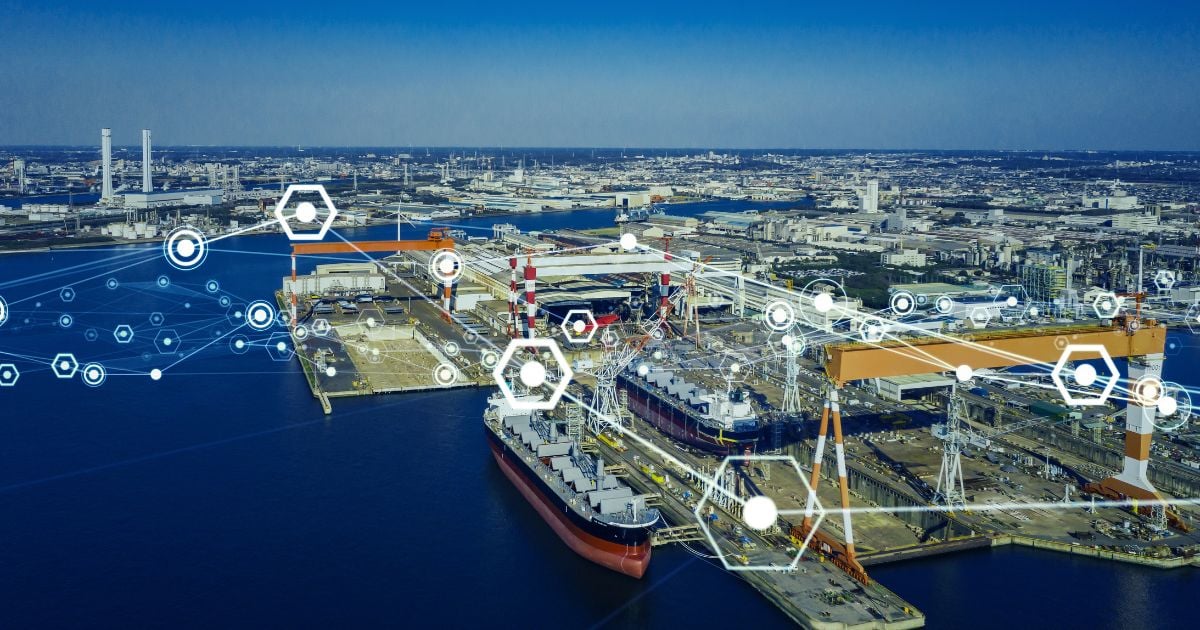Port Management Technology and Smart Shipping in Cambodia

Introduction
Cambodia’s strategic location along key Southeast Asian maritime routes gives it tremendous potential as a regional logistics hub. In 2025, that potential is being amplified by a new wave of port management technologies and smart shipping innovations that are modernizing the country’s seaport operations.
As Cambodia expands exports in garments, agricultural products, and electronics, the need for more efficient port infrastructure has become critical. Innovations such as digital cargo tracking, automated customs clearance, and AI-driven port operations are gaining traction—particularly at Sihanoukville Autonomous Port (SAP) and the country’s inland port network.
In this blog, we explore the current state of port technology in Cambodia, the adoption of smart shipping strategies, and what global businesses can expect as they navigate Cambodian trade routes.
Cambodia’s Key Ports: The Backbone of Trade
Cambodia’s main seaport, Sihanoukville Autonomous Port, handles more than 90% of the country’s container traffic. The port is undergoing major upgrades to accommodate rising cargo volumes, fueled by regional free trade agreements like the RCEP and increased FDI inflows.
Other key facilities include:
-
Phnom Penh Autonomous Port – a critical inland port connecting to the Mekong River system
-
Dry Ports in special economic zones such as the PPSEZ, which streamline customs processing and warehousing
🔗 Cambodia’s Inland Dry Ports: A Competitive Advantage for Exporters
Smart Port Management Technologies in Cambodia
Cambodia’s move toward smart port systems aligns with global trends in logistics digitization. With technical and financial support from Japan, China, and international development agencies, SAP and Phnom Penh Port are rolling out:
📦 1. Port Community Systems (PCS)
These centralized platforms enable all stakeholders—shippers, freight forwarders, customs, and terminal operators—to digitally exchange documents and track shipments. PCS implementation has already cut port dwell times and reduced paperwork-related delays.
🛰️ 2. Real-Time Tracking and IoT Integration
IoT sensors and GPS devices are increasingly used to monitor container location, temperature, and conditions. This is especially crucial for cold-chain exports like mangoes and seafood, where spoilage must be minimized.
💻 3. Digital Customs Clearance
Cambodia has adopted ASYCUDA, a UN-developed customs system that supports e-submission of shipping manifests, duty payments, and clearance documentation. It shortens cargo processing times and improves transparency.
🔗 Exporting Made Easy: Cambodia’s Freight Forwarding Landscape in 2025
🧠 4. Artificial Intelligence in Port Scheduling
AI algorithms are now being tested to optimize vessel berthing schedules, labor assignments, and equipment usage. These tools reduce port congestion and improve throughput—especially during peak export seasons.
Smart Shipping: The Next Evolution
Smart shipping extends beyond port gates. It refers to the digital coordination of vessels, cargo, documentation, and intermodal transport for seamless end-to-end delivery.
⛴️ 1. E-Bill of Lading (e-BL)
Cambodia is working with regional shipping alliances to enable blockchain-secured electronic bills of lading, reducing the need for physical documentation and mitigating the risk of fraud.
📲 2. Mobile Shipping Platforms
Digital platforms now allow Cambodian exporters and logistics providers to book freight, compare routes, and track shipments through smartphone apps. These platforms are especially beneficial for SMEs.
⚓ 3. Green Shipping Innovations
Smart shipping also includes sustainability. Cambodia is participating in regional discussions on fuel-efficient maritime operations, vessel tracking to avoid idling, and carbon offset strategies.
Key Drivers of Smart Port and Shipping Adoption
Several factors are accelerating Cambodia’s shift to smart maritime logistics:
-
Growing trade volumes under the RCEP and bilateral agreements
-
Demand from international buyers for fast, transparent supply chains
-
Rising e-commerce exports requiring fast cross-border fulfillment
-
Need to reduce congestion and increase capacity without new port construction
🔗 RCEP and Its Impact on Cambodia’s Export Markets
Challenges to Overcome
Despite these advancements, port digitization in Cambodia still faces obstacles:
-
Limited technical skills among port staff and customs agents
-
Inconsistent internet and infrastructure reliability in certain zones
-
High cost of modern port equipment and software licenses
-
Need for better data sharing between ministries, ports, and private companies
Development partners like JICA (Japan International Cooperation Agency) and ADB (Asian Development Bank) are helping Cambodia bridge this gap through port modernization grants and training programs.
Opportunities for Exporters and Investors
For global companies looking to establish or expand trade via Cambodia, smart port technology offers several strategic advantages:
✅ Faster clearance and delivery
✅ Better tracking of goods across supply chains
✅ Lower risk of corruption or miscommunication
✅ Integration with smart warehouses and inland dry ports
Companies can now track goods from SEZ warehouse to destination port, and ensure transparent handling of paperwork and tariffs through digital systems.
🔗 Warehouse Automation Trends in Cambodia
How Cambodia-Agent.com Can Help
At Cambodia-Agent.com, we assist foreign businesses in leveraging Cambodia’s smart logistics infrastructure by:
-
Connecting exporters with digitally equipped freight forwarders
-
Coordinating with port agents and customs brokers using the latest platforms
-
Advising on shipping route optimization and compliance
-
Offering business matchmaking with logistics tech providers
🔗 Business Matchmaking Services by Cambodia-Agent.com
Whether you’re exporting from a factory in Kampong Speu or importing materials through Phnom Penh Port, our agents simplify the process and integrate your supply chain into Cambodia’s new logistics future.
Conclusion
Cambodia’s embrace of port management technology and smart shipping is transforming its role in global trade. With rising export demand, strategic infrastructure investment, and digital systems adoption, Cambodia is positioning itself as a smarter, faster, and more reliable trade gateway in Southeast Asia.
Now is the time for exporters, importers, and logistics investors to get involved Cambodia-Agent.com.